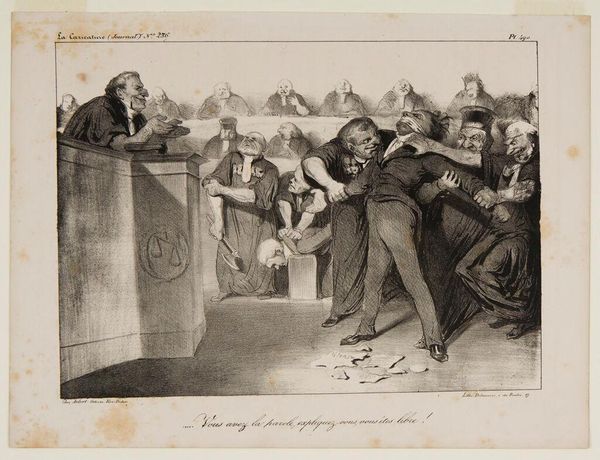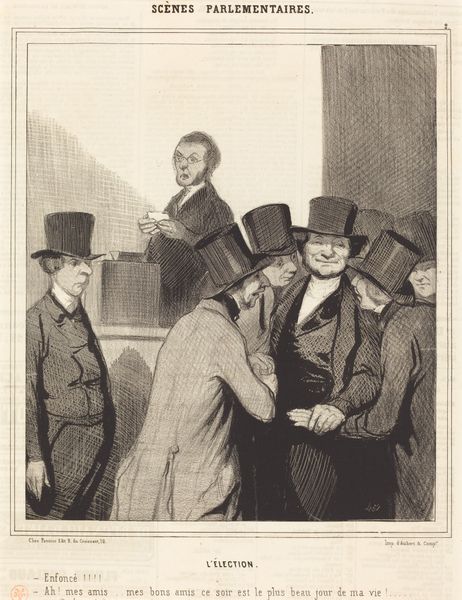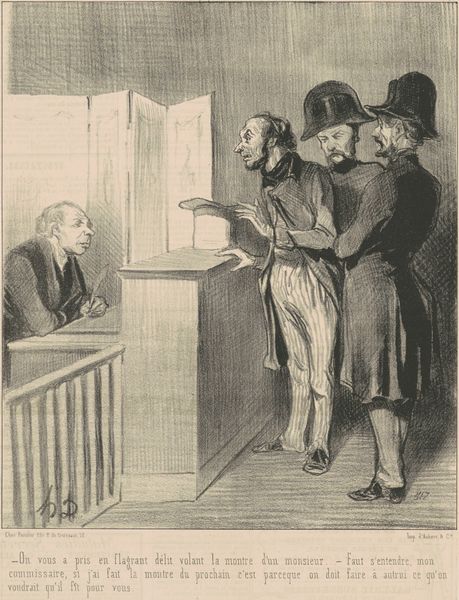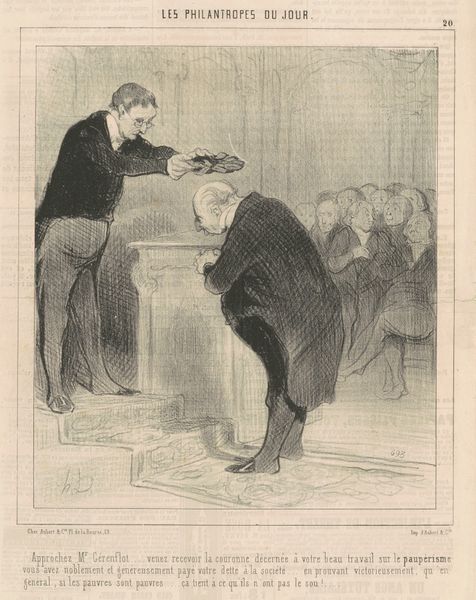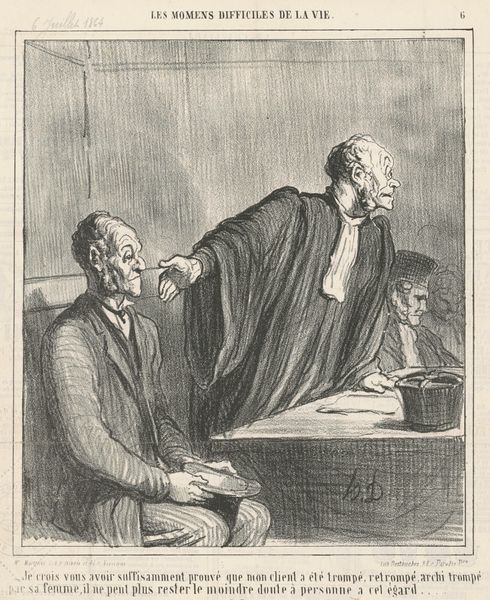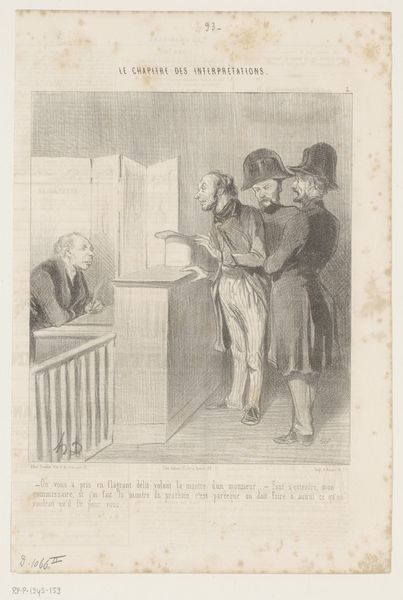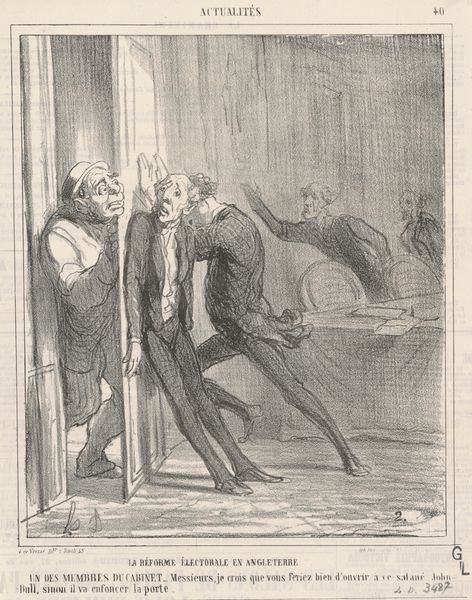
Copyright: Public domain
Honoré Daumier's "The Defender" likely dates to the mid-19th century. It's made from lithography, a printmaking process that democratized image production during that period. Lithography involves drawing on a flat stone or metal plate with a greasy crayon, then treating the surface so that ink adheres only to the drawn areas. This allowed for the relatively quick production of images, which could then be distributed widely in newspapers and journals. Daumier was a master of this technique, using it to create satirical depictions of French society, particularly the bourgeoisie and its institutions. In "The Defender," we see a lawyer in full oratorical flight. The lithographic process, with its ability to capture nuanced tonal gradations, serves Daumier well here. He uses it to emphasize the lawyer's theatricality and perhaps his moral dubiousness. The print medium was crucial to Daumier's project: He was creating art for the masses, about the political and social issues of the day. He deliberately challenged the traditional distinctions between fine art and popular imagery.
Comments
No comments
Be the first to comment and join the conversation on the ultimate creative platform.

